Table of Contents
You can find a barbell in just about every gym. It’s used for squats, deadlifts, bench press, and other basic strength exercises. However, many people prefer to use machines because they’re concerned about not being able to use the barbell properly. This is a shame because they miss out on a range of benefits. That’s why today’s article focuses on the most basic barbell exercises that beginners can also incorporate into their training plan. For beginners, it’s especially important to first focus entirely on learning the proper technique with an empty barbell before slowly adding weight plates.
What Is a Barbell and What Types Are There?
A barbell is a long metal bar onto which weight plates can be loaded from the sides. It provides a range of grips, both wide and narrow. There are several types of barbells available, differing in size, shape, and usage.
Basic types of barbells
- Standard barbell typically weighs around 10 kg and is about 150 cm in length. The barbell is designed to accommodate weight plates with a 30 mm diameter hole.
- Olympic barbell is a classic weightlifting bar. It typically measures 220 cm in length, has a grip diameter of 29 mm, and weighs 20 kg (there is also a women’s version with a diameter of 25 mm and a weight of 15 kg). It is designed to be used with standard Olympic weight plates. You may also encounter a shorter Olympic barbell with a length of 150 cm.
- EZ curl barbell is typically shorter and weighs around 10 kg. It has a curved shape, offering various grip options, and is suitable for exercises targeting biceps, triceps, or shoulders.
- Trap bar features a hexagonal shape and is used for deadlift training.
- Swiss bar, also known as a multi-grip bar, resembles a ladder with various curved rungs, offering different grip options.
- Safety bar boasts a padding where it rests against your upper back during squats. It has long handles on the sides, which you can hold onto over your shoulders. This design allows for a more stable and secure posture during squats.
Barbells are also suitable for home gyms. Learn more about which additional equipment to consider for your home gym setup in the article: Must-Have Accessories for Your Home Gym
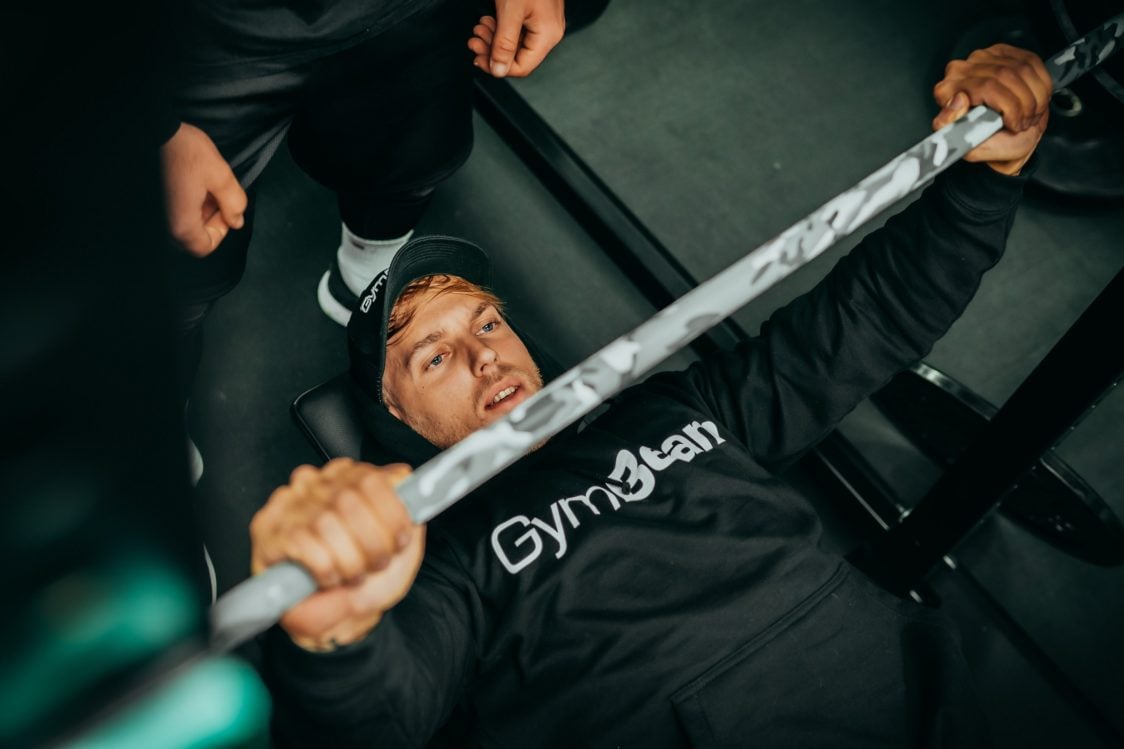
What Are the Benefits of Exercising With a Barbell?
The barbell is an essential tool in strength training. However, many people, especially beginners, tend to avoid it and prefer exercising on machines, which is a shame. The barbell actually offers numerous benefits for athletes of all performance levels.
1. Offers variable resistance
Unlike regular dumbbells or kettlebells, which have a fixed weight, you can adjust the weight on a barbell. You start with an empty barbell, which typically weighs between 8–20 kg depending on the type, and then add weight plates according to your strength and the type of exercise. Olympic barbells can typically handle loads up to 900 kg, making them suitable for powerlifters and strongmen in their training.
2. Suitable for beginners and advanced athletes
Beginners often prefer machine exercises that guide the movement and avoid free weights. However, they should consider incorporating basic barbell exercises. Learning to exercise correctly with a barbell helps establish a solid strength foundation. Barbell exercises allow for full range of motion and can also help adapt to various imbalances. Another advantage is the rapid progress, which can provide the necessary motivation for a beginner. If you have no experience with weighted exercises, it’s worthwhile to contact a personal fitness trainer who can assist in learning the proper technique.
3. Helps build strength and muscle mass
The barbell is used for squats, deadlifts, and bench press. These exercises are among the most effective for building strength and muscle mass. Additionally, by progressively increasing the weight on the barbell, you provide your body with a new stimulus for growth and strengthening.[1, 3]
4. Promotes calorie burning
Using the barbell, you’ll mainly perform compound exercises, which engage muscles throughout the body. This results in burning more calories compared to isolated exercises like bicep or tricep curls. Exercising with a barbell is therefore effective for people aiming to lose weight. [2]

4. Helps improve coordination and balance
When exercising with free weights like a barbell, you engage the stabilizing muscles responsible for balance more intensively. Compound exercises also challenge the coordination of muscles throughout the body, helping improve this ability as well. This is beneficial for daily activities where good coordination and balance can prevent unexpected falls. [5]
Working on your balance can also be aided by a half-ball. You can find exercises with it in the article: 10 Best Balance Half-Ball Exercises To Improve Balance, Strengthen Your Back and Entire Body
5. Suitable for full-body workouts
One barbell and a few weight plates will be enough for a full-body workout. You can use it to strengthen your arms, back, glutes, thighs, and calves. Additionally, it’s great for exercises like squats or deadlifts, which engage muscles in both the upper and lower body. Plus, these exercises activate the core, so you’ll also be strengthening your abdominal muscles.
6. Beneficial for athletes engage in strength training
Fully-loaded barbell exercises are not only found in the training plans of strength athletes. They are also incorporated into the strength training of sprinters, endurance runners, football players, hockey players, and other team sports athletes. Likewise, they are used by other athletes who aim to improve their strength, explosiveness, and movement efficiency. [4]
You might be interested in these products:
How to Exercise With a Barbell?
- Basic barbell exercises are sure to find their place in the training plan of almost every athlete.
- Most of them are compound exercises, making them ideally suited as part of full-body workouts.
- However, you can choose to include only those that target either the upper or lower half of the body in your routine.
- These are demanding exercises, so it’s best to plan them at the beginning of your workout when you have the most energy.
- Always learn the proper technique with an empty barbell and gradually add weight as you become proficient with the exercise.
- Always engage your core when exercising.
- Adjust the weight and number of repetitions according to your goal (see table).
- You can combine barbell exercises with other types of weights, such as kettlebells or dumbbells. These allow you to work each limb separately, which is important for preventing imbalances.
- Don’t forget to also prioritize adequate rest. Muscles typically require 24–72 hours for complete recovery and regeneration. [7]
Recommended weight and number of repetitions
The weight is typically calculated based on your 1RM (one-repetition maximum), which is the maximum weight you can lift for one repetition with a proper technique. You shouldn’t have any strength or energy left for another repetition afterwards. This value is then expressed as a percentage. For example, if your 1RM for squats is 100 kg, then 50% of 1RM would be 50 kg. [6]
| Strength development | 80–95 % | 2–6 | 4–6 | 90 seconds–4 minutes |
| Muscle mass growth (hypertrophy) | 60–80 % | 8–12 | 4–6 | 1–3 minutes |
| Weight loss | 60–80 % | 8–12 | 4–6 | 1–3 minutes |
| Muscular endurance | <60 % | >15 | 2–6 | <1 minute |
If you want to learn more about choosing the right weight according to your goal, read the article: How Much Weight To Lift for Muscle Growth, Strength or Weight Loss?
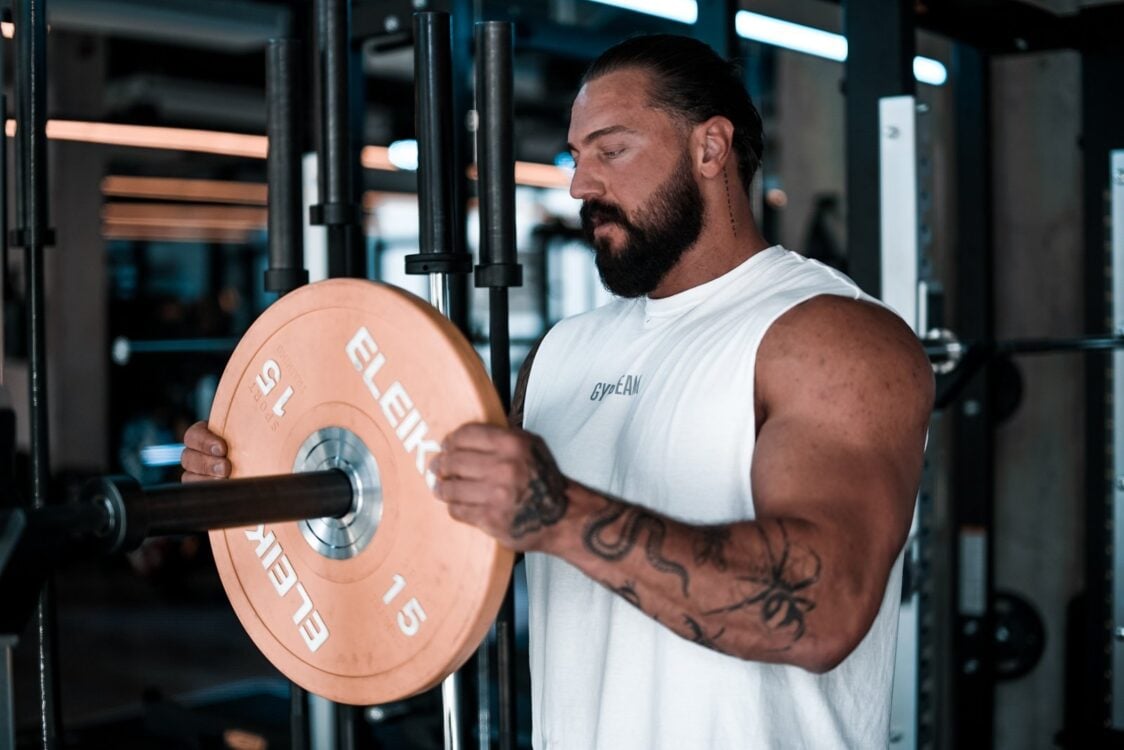
10 Basic Exercises With a Barbell
Before starting barbell exercises, make sure to warm up your entire body. A few minutes of brisk walking or running on a treadmill, or incorporating rowing on a machine or using an air bike, will suffice. Then, move onto an exercise mat and mobilize all your joints. After that, you can include a few exercises with a foam roller, which helps increase blood flow to the muscles and better prepares them for the workout.
1. Overhead Press
- Starting Position: Stand with your feet hip-width apart and grip the barbell with both hands using an overhand grip. Straighten your back and slightly bend your knees. Lift the barbell up to just below your chin, close to the upper part of your chest. Keep your wrists straight, pull your shoulders down away from your ears, and squeeze your shoulder blades together.
- Execution: Exhale and lift the barbell in a controlled manner. Then, inhale as you smoothly return the barbell to the starting position and proceed with another repetition.
- Common Mistakes: Raised shoulders, bent wrists, uncontrolled (jerky) movement, inappropriate weight selection, arching the back, insufficient activation of the core.

2. Push Press
- Starting Position: Stand with your feet hip-width apart and grip the barbell with both hands using an overhand grip. Lift the barbell up to just below your chin, close to the upper part of your chest. Keep your wrists straight, pull your shoulders down away from your ears, and squeeze your shoulder blades together. Perform a slight squat.
- Execution: Exhale, straighten your legs and simultaneously lift the barbell dynamically. Focus on generating power primarily from your legs. When lifting the barbell upwards, always pull your head back to avoid hitting your chin. Then, inhale as you smoothly return the barbell to the starting position and proceed with another repetition.
- Common Mistakes: Raised shoulders, bent wrists, inappropriate weight selection, arching the back, insufficient activation of the core.
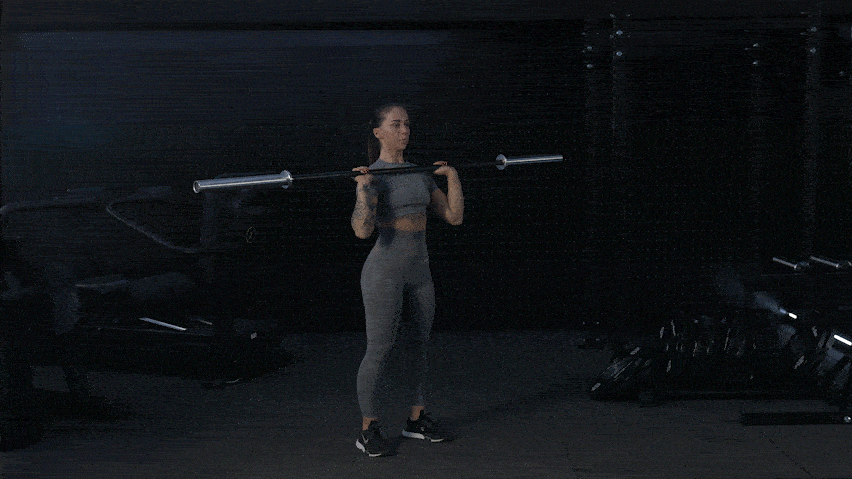
3. Biceps Curl
- Starting Position: Stand with your feet hip-width apart and grip the barbell with an underhand grip, approximately shoulder-width apart. Stand upright with slightly bent knees and hold the barbell extended down by your sides with your arms straight.
- Execution: Exhale and contract your biceps to bend your elbows and lift the barbell towards your shoulders. At the top position, you can hold for 1–2 seconds. Then, inhale as you lower the barbell back to the starting position in a controlled manner and proceed with another repetition.
- Common Mistakes: Involving the lower limbs, elbows pointing away from the body, bent wrists, arching the lower back, uncontrolled movement, insufficient range of motion, inappropriate weight selection.
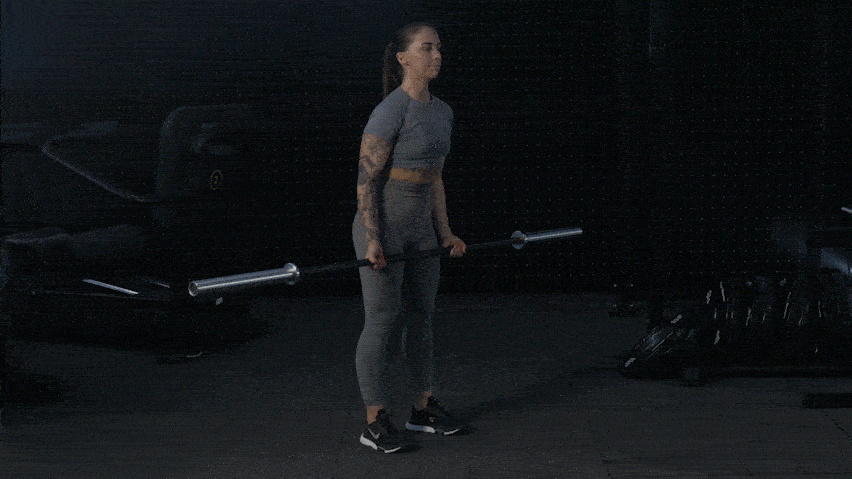
4. Bent Over Row
- Starting Position: Stand with your feet hip-width apart and slightly bend your knees. Gently lean forward while keeping your back in a natural curve, shoulders pulled down away from your ears, and head in line with your spine. Grip the barbell with an overhand grip, about shoulder-width apart, and lift it up to knee level.
- Execution: Exhale and use the muscles of your back and arms to pull the barbell towards your hips. Then, lower it back down to knee level in a controlled manner and proceed with another repetition.
- Common Mistakes: Rounding the back, straightening the knees, insufficient forward lean of the torso, insufficient range of motion.
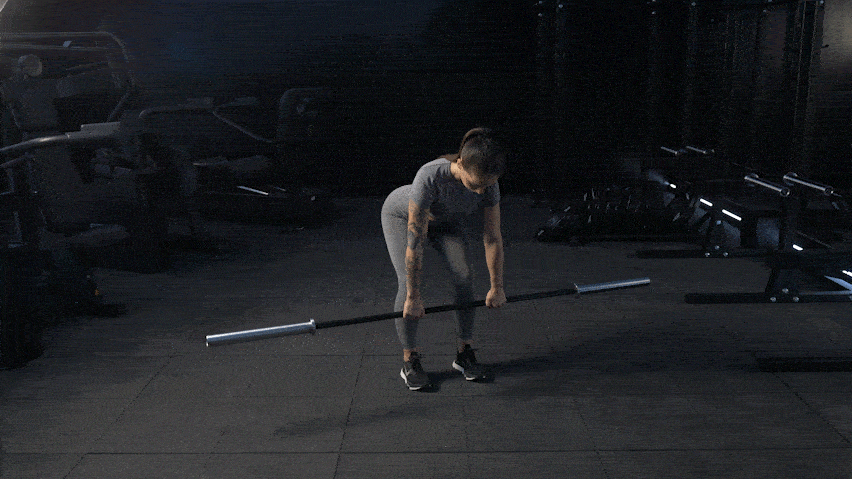
Discover our bestsellers:
5. Bench Press
- Starting Position: Place the barbell in the rack and lie on a flat bench underneath it. Squeeze your shoulder blades together and grip the barbell with an overhand grip. Maintain straight wrists and elbows directly under the barbell. The grip width is slightly wider than shoulder-width. Place your feet flat on the ground with knees at approximately a 90-degree angle. During the exercise, there may be a slight arch in your back. Keep your shoulders and glutes flat on the bench. Engage your core and glutes throughout the exercise.
- Execution: Remove the barbell from the rack and hold it above your chest. Then, inhale as you slowly lower the barbell towards your chest. In the bottom phase, the barbell should lightly touch your chest, around the centre of your sternum. Then, exhale as you push the barbell upward using the contraction of your chest muscles until your elbows are almost fully extended. The path of the barbell on the way up should follow a slight arc. Return to the starting position and proceed with another repetition.
- Common Mistakes: Elbows flaring out, uncontrolled movement, inappropriate weight selection, excessively arching the back, insufficient activation of the core and glutes, limited range of motion.
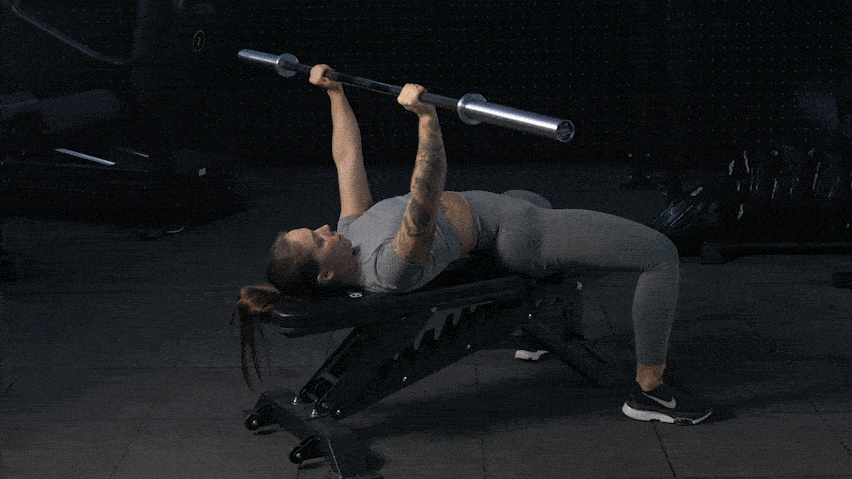
6. Good Morning
- Starting Position: Adjust the barbell with an appropriate weight on a rack. Stand under the barbell, position it behind your neck, and grip it with both hands beside your shoulders, elbows pointing downwards. Engage your core, lift the barbell off the rack, and take a step back. Stand with your feet hip-width apart or in a slightly narrower stance, and slightly bend your knees.
- Execution: Inhale and initiate the movement by smoothly pushing your hips back. Keep your back in a natural curve and your head in line with your spine throughout the movement. Exhale as you smoothly straighten up by activating your glutes and hamstrings. Then, proceed with another repetition. After completing the set, return the barbell back to the rack.
- Common Mistakes: Arching the back, limited range of motion, insufficient activation of the glutes and thighs.
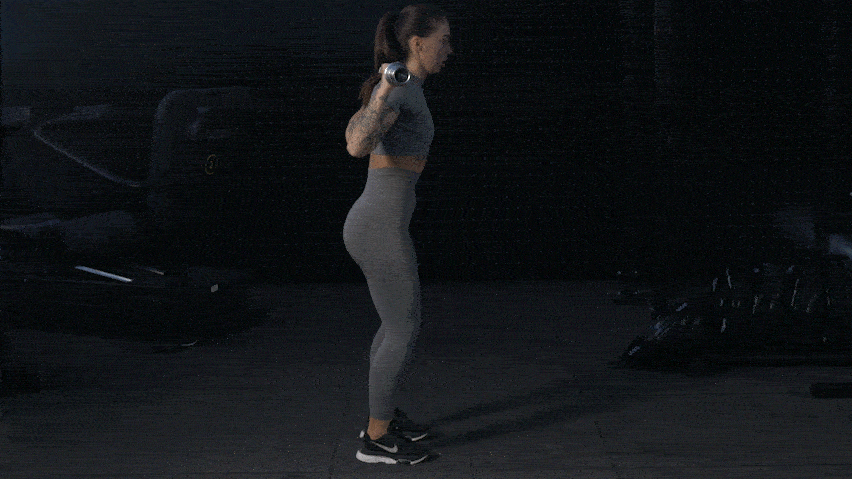
7. Back Squat
- Starting Position: Set up a barbell with appropriate weight on a squat rack. Stand under the barbell with your feet approximately shoulder-width apart. Position the barbell behind your neck and grip it with both hands beside your shoulders, elbows pointing downwards. Engage your core, lift the barbell off the rack, and take a step back.
- Execution: Inhale and initiate the squat by pushing your hips back and down. Exhale as you smoothly straighten up by activating your glutes and the front of your thighs. Then, proceed with another repetition. After completing the set, return the barbell back to the squat rack.
- Common Mistakes: Arching the back, limited range of motion, leaning forward excessively, knees collapsing inward, uneven weight distribution, shifting onto toes or heels, excessive or insufficient weight on the barbell.
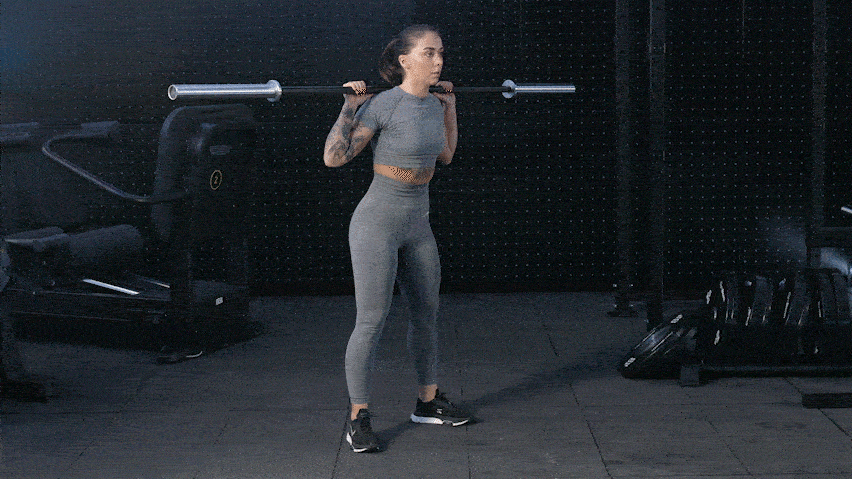
You can find additional squat variations in the article: 10 Basic Exercises With a Barbellsquats: Benefits, Proper Execution and the Most Effective Variations for Both Home and the Gym
8. Forward Lunge
- Starting Position: Stand with your feet hip-width apart. Place the barbell on the rack and load it with an appropriate weight using weight plates. Then, position the barbell on your upper back and grip it from the sides beside your shoulders.
- Execution: Inhale, shift your weight onto one leg, and perform a controlled lunge forward with the other leg. Descend to a depth where your thigh forms approximately a 90-degree angle with your calf at the knee, or deeper if comfortable. Exhale and return to the starting position by activating the muscles of the front of your thighs and glutes, then repeat the lunge with the other leg.
- Common Mistakes: Limited range of motion, leaning forward, knees collapsing inward, uneven weight distribution, poor movement coordination.
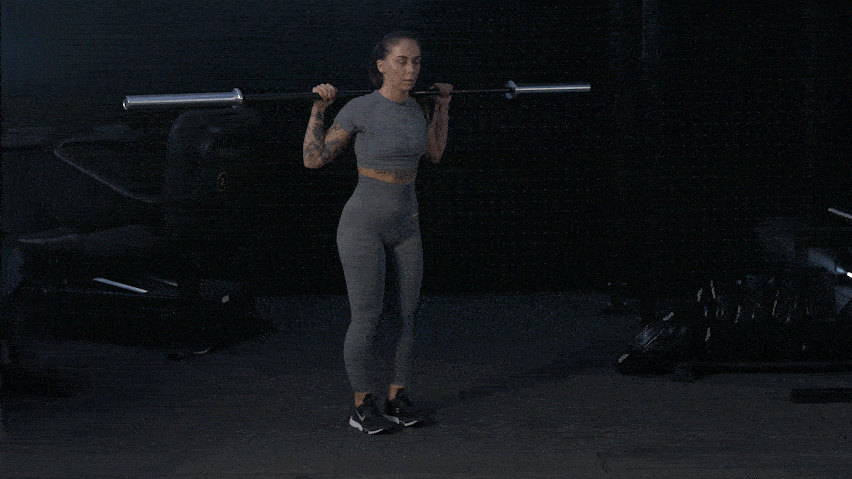
9. Deadlift
- Starting Position: Stand in front of a loaded barbell with weight plates, with your feet about hip-width apart and toes pointing forward. Bend your knees and hinge forward towards the bar, keeping your back in a natural curve and your head in line with your spine. Then, grip the barbell with both hands using an overhand grip or a mixed grip if the weight is heavy (one hand overhand, the other underhand). The grip width should be approximately shoulder-width apart or slightly wider.
- Execution: Inhale, and as you exhale, use the activation of your leg muscles (quadriceps and glutes) to gradually straighten up. Start by straightening your knees and then smoothly extend your torso. The barbell should travel up close to your legs on the way up. Afterwards, follow up with another repetition.
- Common Mistakes: Rounding the back, uncontrolled movement, limited range of motion.
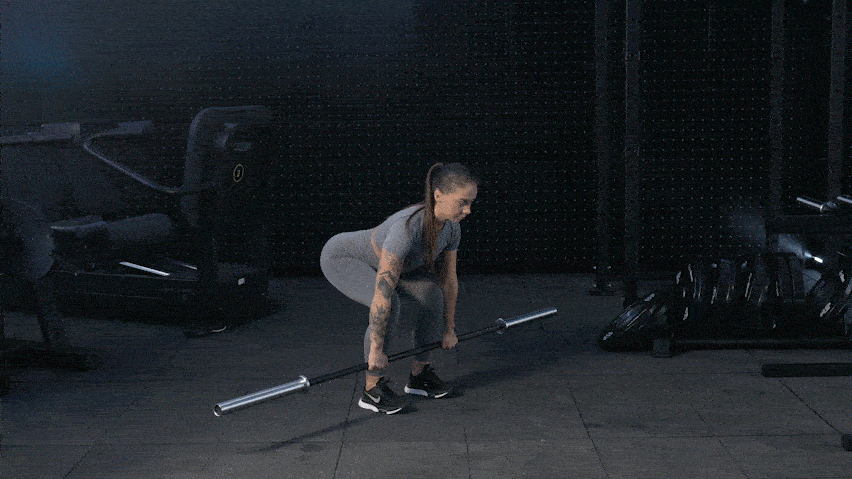
10. Romanian Deadlift
- Starting Position: Stand in front of a loaded barbell with your feet hip-width apart. Grasp the barbell with both hands at about shoulder-width apart. Stand upright and hold the barbell with extended arms in front of your thighs. Keep your knees slightly bent.
- Execution: Inhale and initiate a hip movement by pushing your hips back and leaning forward in a controlled manner. The barbell should move down just in front of your legs. Try to lower it to around ankle level, ensuring that your back maintains its natural curve and your head remains in line with your spine. Then, exhale and use the contraction of your hamstrings and glutes to return to the upright position. Immediately proceed with the next repetition.
- Common Mistakes: Limited range of motion, rounding the back, uncontrolled movement.
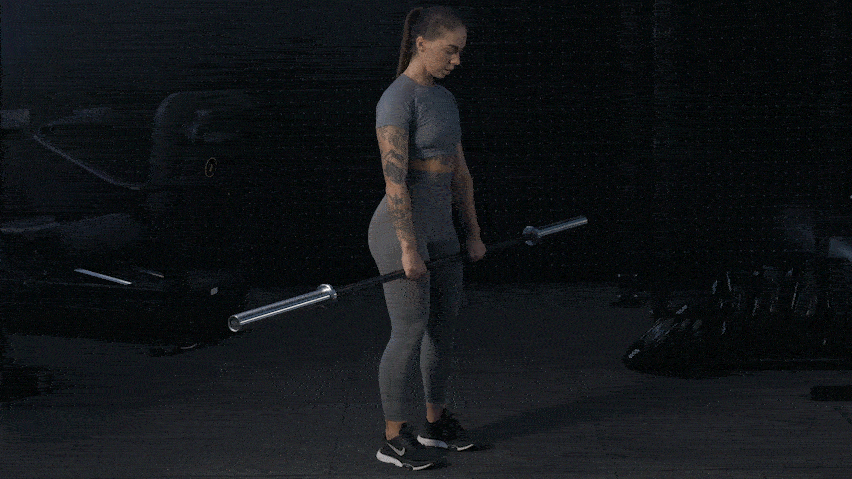
Where to Go From Here?
- You can also exercise the upper and lower parts of your body with a power bag. Find workout inspiration in the article: Top 15 Full-Body Exercises With a Power Bag
- To spice up the training of the major muscle groups, you can also include exercises from the article: Top 13 Exercise Ball Exercises for a Full-Body Workout
- You can also perform hip thrusts with the barbell. Learn how to do them correctly in the article: How to Correctly Perform Hip Thrusts for the Perfect Glutes? Top 6 Variations
- If you want to focus on training the lower half of your body, you can try 9 Best Exercises for Thighs & Calves or 9 Best Glutes & Legs Exercises.
- If you’re unsure how to create a training plan, the article “How To Create a Quality Gym Training Plan?” can help you with that.
What Are the Main Takeaways?
Barbell exercises form the foundation of strength training. They engage muscles throughout the entire body, supporting strength building, muscle growth, and even weight loss. Each individual can adjust the weight, repetitions, and sets according to their goals. This makes them beneficial for athletes of all levels. However, it’s always important to focus on proper technique and not to overlook adequate recovery and quality nutrition, which are essential for achieving results.
Did you find this article helpful? If so, feel free to share it with your friends and inspire them with some barbell workout ideas.
[1] Broser, E. The Top 10 Exercises for Building Muscle and Strength. – https://www.muscleandfitness.com/workouts/workout-tips/top-10-muscle-and-strength-building-moves/
[2] Wei, W., Zhu, J., Ren, S., Jan, Y.-K., Zhang, W., Su, R., & He, L. Effects of progressive body-weight versus barbell back squat training on strength, hypertrophy and body fat among sedentary young women. – https://doi.org/10.1038/s41598-023-40319-x
[3] Muscle & Strength. Maximize Your Gym Time: A Look At The Most Productive Muscle Building Exercises. – https://www.muscleandstrength.com/articles/maximize-gym-time-most-productive-muscle-building-exercises.html
[4] TrainHeroic. 4 Scientifically Proven Ways To Develop Explosive Power (And How To Program Each). – https://www.trainheroic.com/blog/4-scientifically-proven-ways-to-develop-explosive-power-and-how-to-program-each/
[5] Šarabon, N., & Kozinc, Ž. Effects of Resistance Exercise on Balance Ability: Systematic Review and Meta-Analysis of Randomized Controlled Trials. – https://doi.org/10.3390/life10110284
[6] Schoenfeld, B. J., Grgic, J., Van Every, D. W., & Plotkin, D. L. Loading Recommendations for Muscle Strength, Hypertrophy, and Local Endurance: A Re-Examination of the Repetition Continuum. – https://doi.org/10.3390/sports9020032
[7] Ide, B. N., Leme, T. C. F., Lopes, C. R., Moreira, A., Dechechi, C. J., Sarraipa, M. F., Da Mota, G. R., Brenzikofer, R., & Macedo, D. V. Time course of strength and power recovery after resistance training with different movement velocities. – https://doi.org/10.1519/JSC.0b013e3181e7393f


Add a comment